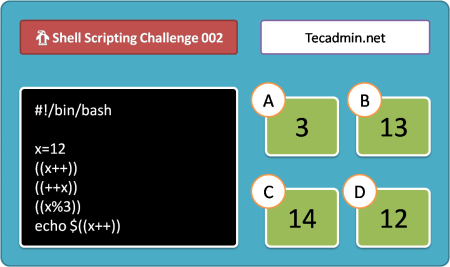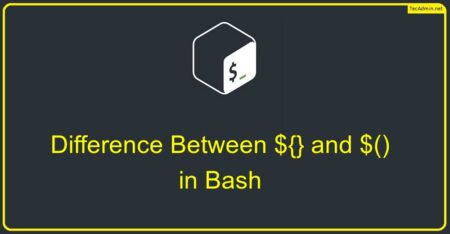Bash is a powerful scripting language that is commonly used for automation and system administration tasks. One of the most important concepts in Bash scripting is control flow, which refers to the way in which the script executes different commands based on various conditions. Two key control flow statements in Bash are break and continue, which can help you control the execution of your code and make it more efficient.
What are Break and Continue in Bash?
break and continue are two Bash control flow statements that can be used to alter the flow of a loop or switch statement. They allow you to exit a loop or skip certain iterations based on specific conditions.
Here’s a brief overview of how break and continue work in Bash:
- break: When used inside a loop or switch statement, break will immediately exit the loop or switch statement and continue executing the script from the next command after the loop or switch statement.
- continue: When used inside a loop, continue will skip the current iteration and move on to the next iteration. In other words, it allows you to skip certain iterations based on specific conditions.
Both break and continue can be useful for improving the efficiency of your Bash scripts, as they allow you to control the execution of your code and avoid unnecessary iterations.
Using Break in Bash
Let’s start by looking at how to use break in Bash. break is commonly used in loops and switch statements to immediately exit the loop or switch statement when a certain condition is met.
Here’s an example of how to use break in a loop:
1 2 3 4 5 6 7 8 9 10 11 12 13 | #!/bin/bash for i in {1..10} do if [ $i -eq 5 ] then break fi echo $i done echo "Loop complete" |
In this example, we have a for loop that will iterate over the values of i from 1 to 10. However, we’ve added an if statement that checks whether i is equal to 5. If i is equal to 5, we’ll use the break statement to immediately exit the loop.
If we run this script, we’ll see the following output:
Output1 2 3 4 Loop complete
As you can see, the loop only iterated up to 4 before exiting due to the break statement.
Using Continue in Bash
Next, let’s look at how to use continue in Bash. continue is used in loops to skip certain iterations based on specific conditions.
Here’s an example of how to use continue in a loop:
1 2 3 4 5 6 7 8 9 10 11 12 13 | #!/bin/bash for i in {1..10} do if [ $i -eq 5 ] then continue fi echo $i done echo "Loop complete" |
In this example, we have a for loop that will iterate over the values of i from 1 to 10. However, we’ve added an if statement that checks whether i is equal to 5. If i is equal to 5, we’ll use the continue statement to skip that iteration and move on to the next iteration.
If we run this script, we’ll see the following output:
Output1 2 3 4 6 7 8 9 10 Loop complete
As you can see, the loop skipped the iteration where `i` was equal to 5 and continued on with the rest of the iterations.
Using Break and Continue in Switch Statements
In addition to loops, break and continue can also be used in switch statements in Bash.
Here’s an example of how to use break in a switch statement:
1 2 3 4 5 6 7 8 9 10 11 12 13 14 15 16 17 18 19 20 21 22 | #!/bin/bash case $1 in start) echo "Starting service" ;; stop) echo "Stopping service" ;; restart) echo "Restarting service" ;; *) echo "Invalid option" break ;; esac echo "Switch statement complete" |
In this example, we have a switch statement that will check the value of the first command-line argument ($1). If $1 is equal to “start”, “stop”, or “restart”, it will execute the corresponding command. If $1 is not equal to any of these values, it will output an error message and use the break statement to exit the switch statement.
If we run this script with the command ./myscript.sh invalid, we’ll see the following output:
OutputInvalid option Switch statement complete
As you can see, the script outputs the error message and then exits the switch statement using the break statement.
Here’s an example of how to use continue in a switch statement:
1 2 3 4 5 6 7 8 9 10 11 12 13 14 15 16 17 18 19 20 21 | #!/bin/bash case $1 in start) echo "Starting service" ;; stop) echo "Stopping service" ;; restart) echo "Restarting service" ;; *) continue ;; esac echo "Switch statement complete" |
In this example, we’ve modified the previous script to use the continue statement instead of break. If $1 is not equal to any of the expected values, the script will simply skip that iteration of the switch statement and move on to the next iteration.
If we run this script with the command ./myscript.sh invalid, we’ll see the following output:
OutputSwitch statement complete
As you can see, the script simply skipped the iteration where $1 was invalid and continued on with the rest of the script.
Conclusion
In this tutorial, we’ve covered the basics of using break and continue in Bash scripting. These statements are powerful tools for controlling the execution of your code and improving the efficiency of your scripts. By using break and continue effectively, you can create more robust and efficient Bash scripts that can handle a variety of tasks and scenarios.


